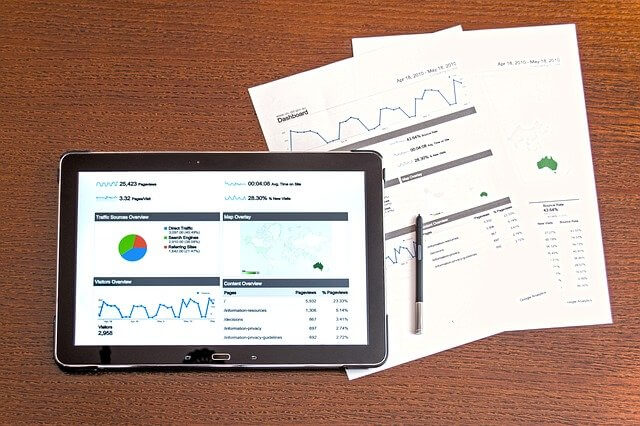Email subscriber scoring can significantly boost your email marketing results. With such scoring implemented, you can learn more about your audience and create optimized content and targeting strategies. We’ve recently learned more about email subscriber scoring and how it works. This time, we’d like to explore more about email subscriber engagement scoring and email automation tactics.
1. Why Use Email Subscriber Scoring?
There is no doubt that bringing additional information/data will help improve your overall email marketing, including your newsletter content, deployment, and segmentation. Email subscriber scoring can enhance your manual deployments and one-off campaigns. For example, you can create much more targeted queries, mailing lists and segments using subscriber scores. Knowing how your customers rank by their engagement can even help you with HTML email template selection.
That said, subscriber scoring can improve your automated emails and workflows too. You can uncover a lot of potential by integrating the subscriber score into your ESP if that’s not a native function. If you bring email subscriber engagement score into your queries, customer journeys and workflows, your email marketing automation will generate even better results.
2. Think About Your Subscribers in the Marketing Automation Context
Increasingly more companies are using automated flows and email funnels to reach their goals. Therefore, to identify your automation enhancement and optimization possibilities, try to think about your email subscribers in the marketing automation context, for example:
- Suppose you could have a subscriber engagement score. How would it help you find ways to incentivise your leads and encourage conversions? Where can you find opportunities to enhance your lead-nurturing workflows?
- Can your subscriber engagement score help create sales funnels where your customers progress more quickly?
- If you could know your subscriber engagement levels, would that help you speed your sales cycles?
- How can your subscriber score help you identify leads that are most likely to convert sooner? How can you optimize the automated email flows for these types of prospects?
3. Email Automation and Subscriber Engagement Score
Email subscriber score can be incorporated into your automated journeys/flows. Let’s say you’ve set up an automated email flow to add contacts to an email journey if they reach a specific score. For example, a subscriber who has a score greater than 60 enters a flow to generate sales. Subscribers with a higher score can be considered warm leads. Therefore, the flow could be triggering a “lead nurturing” series of emails to engage with the contact and ultimately generate sales.
In the ESP, your flow could be adding these engaged contacts to a specified list. Your marketing automation tool would identify that action as a trigger and start running the flow. Make sure to plan these flows well – for instance, you might not want the subscribers entering the same flow twice.
4. Example: Welcome Email Series
Let’s say you have two email subscribers who have just opted-in through your web form. In this example, they both get 5 email subscriber engagement points. But these two subscribers behave differently.
One of them opens the first welcome email and is awarded additional 2 points. The subscriber also clicked on a few links and got another 6 points. In this example, our subscriber scoring also tracks behaviour on the landing page, where our first subscriber clicked on another link and gained an additional 5 points.
The other email subscriber opened the first welcome email and also got 2 points but hasn’t clicked on any links. So from a subscriber scoring perspective, you have one subscriber with 18 points and another with 7.
Therefore, we can customise our automated welcome journey accordingly. We have a rule for the flow to send a second email to the subscribers. The engagement score helps us determine that the subscriber with the 18 points is closer to making a buying decision. Therefore, the second email will offer a voucher with a 10% off to encourage a sale.
The flow will trigger a send of a different email to the subscriber with a lower engagement score – it will contain more “lead-nurturing” content instead of a push for purchase.
This example illustrates how you can incorporate your subscriber engagement score into your automated email flows. Remember, you can use different techniques or ways to optimise the flows and/or email content to help you achieve your goals.
5. Sales Qualified Leads
Email automation and subscriber scoring can also help you find ways to work with your sales teams more efficiently. Let’s say, marketing leads are owned by marketing and not sales until they reach a certain point when they are shared with the salespeople for follow-ups.
You can develop email automation flows, where, for example, all marketing qualified leads that reach a subscriber engagement score of 50 can be added to an automated flow. This flow aims to send information about these contacts to the right salespeople. It could, for instance, move these contacts into a specified queue for the sales team to qualify or even change their status in the CRM for salespeople to identify them easier.
Email Subscriber Engagement Scoring Will Benefit Your Business
We’ve given you some good examples of how email subscriber engagement score can help you improve your automated email workflows. You can optimize your outgoing customer automation flows as well as create internal ones to be more efficient and make sure the right people are being informed in real-time. Having an integrated subscriber engagement score will help you boost your business and achieve your goals!

